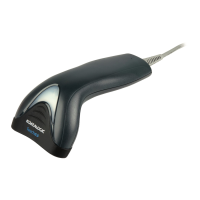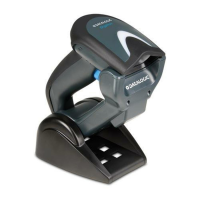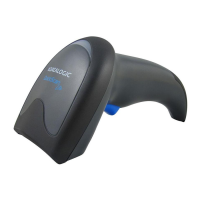TC1200 REFERENCE MANUAL
132
5
There are many factors that determine when to change the decoding level for a particular
symbology. These factors include spots, voids, non-uniform bar/space widths, damaged
labels, etc. that may be experienced in some barcode labels. If there are many hard to read
or damaged labels that cannot be decoded using a conservative setting, increase the
decoding level to be more aggressive. If the majority of labels are very good quality labels, or
there is a need to decrease the possibility of a decoder error, lower the decoding level to a
more conservative level.
Minimum Reads
This feature specifies the minimum number of consecutive times a label must be decoded
before it is accepted as good read.
Interdigit Ratio
This feature specifies the ratio between an intercharacter space and module for given
symbology labels.
To set this value:
1. Determine the desired ratio setting. (1-10).
2. Use the Chart in Appendix C to find the hex equivalent
for the desired numeric value.
3. Go to relative Code Symbology page and scan the ENTER/EXIT PROGRAMMING
MODE barcode to enter Programming Mode.
4. Scan the barcode: SET INTERDIGIT RATIO.
5. Scan the two hex equivalent characters
from the keypad in Appendix B that represent the
numeric value determined in step 1 above.
NOTE
If you make a mistake before the last character, scan the CANCEL barcode
to abort and not save the entry string. You can then start again at the
beginning.
6. Scan the ENTER/EXIT PROGRAMMING MODE barcode to exit Programming Mode.
This completes the procedure.
Character Correlation
When correlation is enabled, the barcode reader will combine label data from multiple scans
when decoding. Enabling correlation will help the scanner read labels that have some spots
and/or voids. It may also help read labels that have damaged areas. Enabling correlation will
also increase the chances that a label will be read incorrectly.
